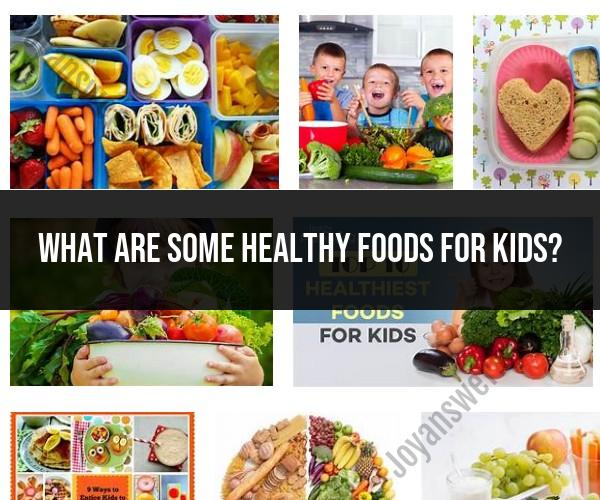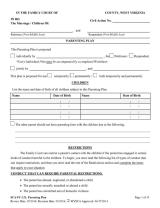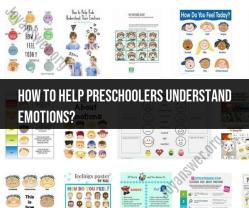What are some healthy foods for kids?
Promoting healthy eating habits for kids is crucial for their growth and development. Here are some nutritious and kid-friendly foods that parents and caregivers can include in children's diets:
Fruits: Fruits are rich in vitamins, minerals, and fiber. Encourage children to enjoy a variety of fruits, such as apples, bananas, berries, oranges, and grapes. Fruit can be a sweet and natural dessert option.
Vegetables: Vegetables provide essential nutrients like vitamins A and C, folate, and fiber. Offer a range of colorful vegetables, including carrots, broccoli, spinach, bell peppers, and sweet potatoes. You can make vegetables more appealing by preparing them in creative ways, such as roasting or blending them into smoothies.
Whole Grains: Whole grains are a great source of complex carbohydrates and fiber. Opt for whole-grain options like whole wheat bread, brown rice, whole-grain pasta, and oats. Whole-grain cereals can also be a nutritious breakfast choice.
Lean Proteins: Protein is essential for growth and muscle development. Choose lean protein sources such as skinless poultry, lean cuts of beef or pork, fish, tofu, beans, and legumes. Eggs are also a protein-rich option.
Dairy or Dairy Alternatives: Dairy products provide calcium and vitamin D for strong bones. Offer low-fat or fat-free milk, yogurt, and cheese. If your child is lactose intolerant or prefers dairy alternatives, look for fortified soy, almond, or oat milk options.
Nuts and Seeds: Nuts and seeds are rich in healthy fats, protein, and fiber. They make for excellent snacks. Ensure that they are age-appropriate and safe for your child, as some nuts may pose choking hazards for young children.
Healthy Fats: Include sources of healthy fats in your child's diet, such as avocados, olive oil, and fatty fish like salmon or trout. These fats support brain development and overall health.
Water: Encourage children to drink plenty of water throughout the day. Water is essential for staying hydrated and maintaining overall health. Limit sugary drinks like soda and fruit juices.
Greek Yogurt: Greek yogurt is higher in protein than regular yogurt and can be a nutritious snack or breakfast option. Add fresh fruit or a drizzle of honey for sweetness.
Nut Butter: Natural nut butter, such as peanut or almond butter, can be spread on whole-grain bread or used as a dip for fruits and vegetables.
Hummus: Hummus is a tasty dip made from chickpeas and tahini. It can be served with veggie sticks or whole-grain crackers for a healthy snack.
Cheese: Cheese can be a good source of calcium and protein. Offer cheese slices or cubes as a snack or incorporate cheese into meals like quesadillas and omelets.
Smoothies: Make nutritious smoothies by blending fruits, vegetables, yogurt, and a small amount of honey or maple syrup. This is a fun way to sneak in veggies.
Homemade Popsicles: Create homemade popsicles using pureed fruit and yogurt or 100% fruit juice. This is a healthier alternative to store-bought popsicles.
Oatmeal: Oatmeal is a fiber-rich breakfast option. Top it with berries, honey, or a sprinkle of cinnamon for added flavor.
When introducing new foods to children, it's essential to be patient and offer a variety of options. Involving kids in meal preparation and making meals visually appealing can also encourage them to try different foods. Additionally, consider individual dietary needs and any food allergies or intolerances that may apply to your child.
Nutritious Choices for Kids: A Guide to Healthy Eating
A healthy diet is essential for children of all ages. It provides them with the nutrients they need to grow and develop properly, both physically and mentally. A healthy diet also helps children to maintain a healthy weight and reduce their risk of developing chronic diseases later in life.
Here is a guide to healthy eating for kids:
- Fruits and vegetables: Fruits and vegetables are packed with vitamins, minerals, and antioxidants that are essential for children's health. They also contain fiber, which helps to keep children's digestive systems healthy. Good choices for kids include apples, bananas, berries, carrots, broccoli, spinach, and tomatoes.
- Whole grains: Whole grains are a good source of carbohydrates, fiber, and vitamins. They provide children with the energy they need to grow and be active. Good choices for kids include whole-wheat bread, brown rice, quinoa, and oats.
- Lean protein: Lean protein is essential for building and repairing tissues. Good sources of lean protein for kids include chicken, fish, beans, and tofu.
- Low-fat dairy: Low-fat dairy is a good source of calcium, vitamin D, and protein. They are important for building and maintaining strong bones and teeth. Good choices for kids include milk, yogurt, and cheese.
Kid-Friendly Nutrition: Tasty and Nutritious Foods for Children
There are many tasty and nutritious foods that kids will love. Here are a few ideas:
- Fruit and vegetable smoothies: Smoothies are a great way to get kids to eat their fruits and vegetables. Simply combine your child's favorite fruits and vegetables with yogurt or milk and blend until smooth.
- Whole-wheat pasta with tomato sauce: This is a classic kid-friendly meal that is also very nutritious. Choose whole-wheat pasta and a low-sodium tomato sauce. You can also add in some vegetables, such as spinach or broccoli, for an extra boost of nutrients.
- Grilled chicken breast with roasted vegetables: This is a healthy and delicious meal that is perfect for kids of all ages. Simply grill chicken breasts and roast your child's favorite vegetables, such as carrots, broccoli, or sweet potatoes.
- Peanut butter and jelly sandwiches: Peanut butter and jelly sandwiches are a classic kid-friendly snack that is also a good source of protein and fiber. Choose whole-wheat bread and all-natural peanut butter. You can also add in a banana or apple for some extra sweetness and nutrients.
A Healthier Tomorrow: Encouraging Healthy Eating Habits in Kids
It is important to encourage healthy eating habits in kids from a young age. This will help them to develop a healthy relationship with food and to make healthy choices throughout their lives.
Here are a few tips for encouraging healthy eating habits in kids:
- Be a role model: Children learn by watching the adults in their lives. If you eat healthy foods, your children are more likely to do the same.
- Make mealtimes fun and relaxed: Mealtimes should be a time for family to come together and enjoy each other's company. Avoid using food as a reward or punishment.
- Offer a variety of healthy foods: Offer your child a variety of healthy foods at every meal and snack. This will help them to learn about different foods and flavors.
- Don't force children to eat: If a child doesn't like a particular food, don't force them to eat it. Instead, offer them other healthy options.
By following these tips, you can help your children to develop healthy eating habits that will last a lifetime.











